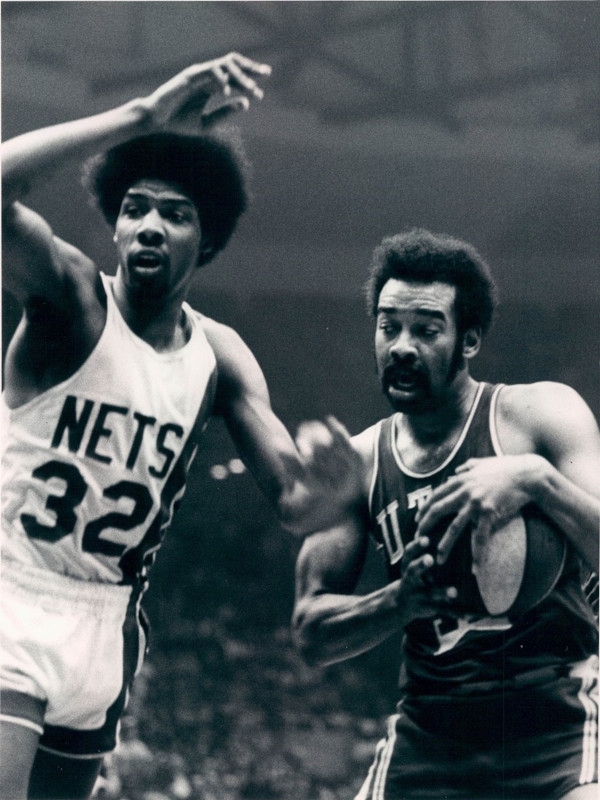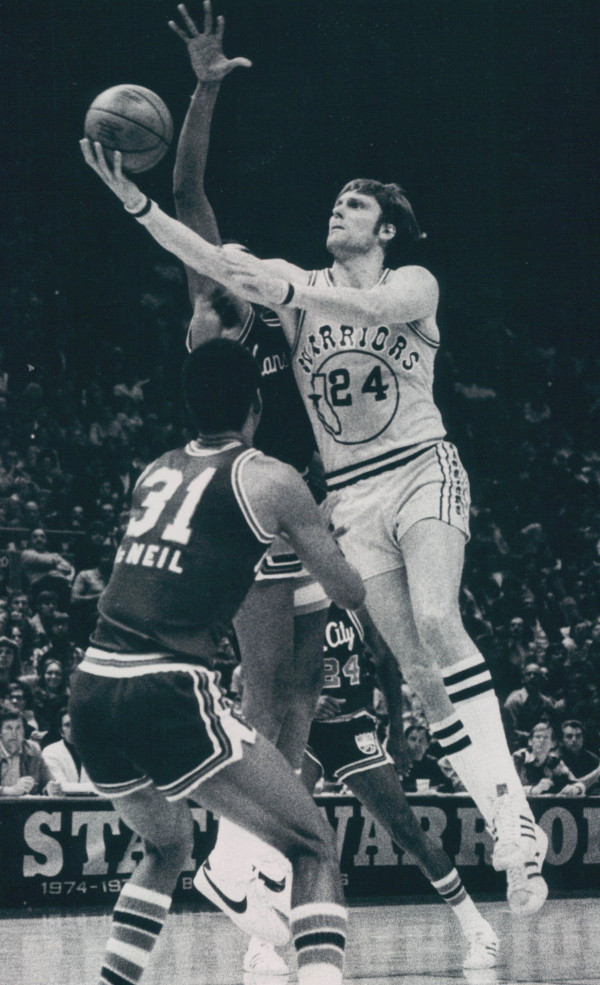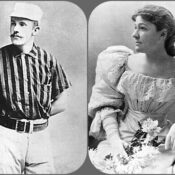Today, the American Basketball Association is preparing for its All-Star Game and Final Eight Tournament, to be played April 15 to April 18 in St. Louis, Missouri. But 45 years ago in 1976, the original incarnation of the ABA was coming to an end. After its final series of playoffs, four of the remaining teams would be rolled into the National Basketball Association. The influx of teams and talent, and the eventual absorption of the ABA’s three-point line, would add excitement to the NBA on the way to the league’s explosive burst of popularity in the 1980s.
The original ABA launched in 1967. While the various owners did want to field a competitive league, they also eyed the notion of merging with the pre-existing NBA at a future date. The idea was predicated on the fact that an ABA buy-in was much smaller, and that owners would stand to make much more if their team transitioned to the other league. The ABA also targeted cities and states that had no NBA market at the time. The 1967 launch included 11 teams; of those, only two (the Indiana Pacers and the Kentucky Colonels) would retain the same name and location throughout the existence of the league.
It was obvious that the ABA had an uphill climb in store. The NBA had been firmly entrenched since 1949 when the Basketball Association of America (founded in 1946) merged with the older National Basketball League (1937). That gave the various teams a couple of decades of established locations, fanbases, and TV contracts. The ABA offered different twists on the game, including the 3-pointer (a concept inspired by the short-lived American Basketball League of the 1960s) and some teams that were based in regions rather than cities so that their “home games” were in different arenas, broadening the potential scope of the live audience. The new league also introduced its most visible and memorable symbol: the red, white, and blue basketball.
How Good Was Dr. J REALLY? (Uploaded to YouTube by Jonny Arnett)
The ABA was able to pull in some supremely talented players because they adopted the so-called “hardship rule.” Under NBA rules of the time, players could enter their draft after finishing college/completing their NCAA eligibility. The hardship rule allowed players to leave college early to enter the ABA draft if they could help their family/personal situations by going pro and drawing a salary to play. One such player that elected to leave college early in 1971 for the ABA and became their biggest star: Julius Erving, aka Dr. J. Other marquee players included Moses Malone, Rick Barry, George Gervin, Mel Daniels, Artis Gilmore, George McGinnes, and Spencer Haywood (the player that brought about the hardship rule in the first place). Erving was a master of the slam dunk, and his aerial artistry, along with the looming possible of 3-pointers, added new excitement to the ABA style.

Regardless of the influx of hugely-talented players and playing in areas without NBA teams, the ABA still struggled. There was no overarching national TV deal, and teams were frequently moving markets and changing names, resulting in a lack of continuity. For example, the team that started out as the New Orleans Buccaneers in 1967 became the Louisiana Buccaneers in 1970 before morphing into the Memphis Pros, the Memphis Tams, the Memphis Sounds, the Baltimore Hustlers, and the Baltimore Claws over the course of six years. They folded before what would be the league’s final season.
In reality, both the NBA and ABA had wanted a merger to happen as early as 1970. However, legendary player Oscar Robertson filed an antitrust suit that put it on hold; the basic assertion was that a merger would remove the competition between leagues that actually resulted in better salaries for personnel. The suit was settled in February of 1976, opening the way for the merger to happen. The final ABA Playoffs took place throughout the month of April, 45 years ago. The Championship series between the Denver Nuggets and New York Nets ended with the Nets taking the title on May 13. The merger went down on June 17. But only four ABA teams made the transition.

Heading into the final ABA season, four teams (Memphis, San Diego, Utah, and Virginia) ceased operations. The six remaining teams were the Indiana Pacers, the San Antonio Spurs, the New York Nets, the Denver Nuggets, the Kentucky Colonels, and the Spirits of St. Louis. However, the NBA was only willing to take on four of the six teams. The Chicago Bulls saw the advantage of bringing in the Pacers, as it could cultivate a local rivalry; they also wanted Colonels star Artis Gilmore. The Colonels’ ownership agreed to fold for cash; Gilmore was signed to the Bulls and the remaining players entered a dispersal draft, joining other entering teams. The Spirits’ owners, brothers Daniel and Ozzie Silnas, agreed to shut down their team for cash and an in perpetuity cut of TV revenue from the four incoming teams; the players went into the dispersal draft. Over the decades, the Silnas brothers made hundreds of millions of dollars; however, they sued in 2013 over revenue they felt owed from various cable and streaming deals. A deal reached in 2014 should pay out close to an additional $500 million.
When the NBA kicked off the 1976-1977 season, the Indiana Pacers, New York Nets, Denver Nuggets, and San Antonio Spurs were firmly entrenched in the league. All four remain, though the Nets moved to New Jersey, and then Brooklyn. The NBA has grown to 30 teams, with a number of cities under current consideration for future expansion.
As for the ABA, it found new life as a league in 1999. Original ABA and Pacers co-founder Richard P. Tinkham launched the league with Joe Newman. The modern ABA consists of dozens of teams spread over six regions. Like their original counterpart, they have some unique rules. The most exciting is the 3D rule, which adds an extra point to any score that results from a steal in the backcourt. The league’s All-Star Game and Final 8 tournament will be available on pay-per-view from April 15 thru April 18.
Basketball as a proposition remains so attractive that another league, The Basketball League (originally called North American Premiere Basketball) launched in 2018. With 29 active teams, they expect to add another eight in 2022. Maybe they’ll also create innovations that drive the game forward, or maybe they’ll someday too be confined to the hardwood of history. Whatever the case, basketball remains one of the great American games, and there’s always room for more.
Featured image: photographist / Shutterstock
Become a Saturday Evening Post member and enjoy unlimited access. Subscribe now



